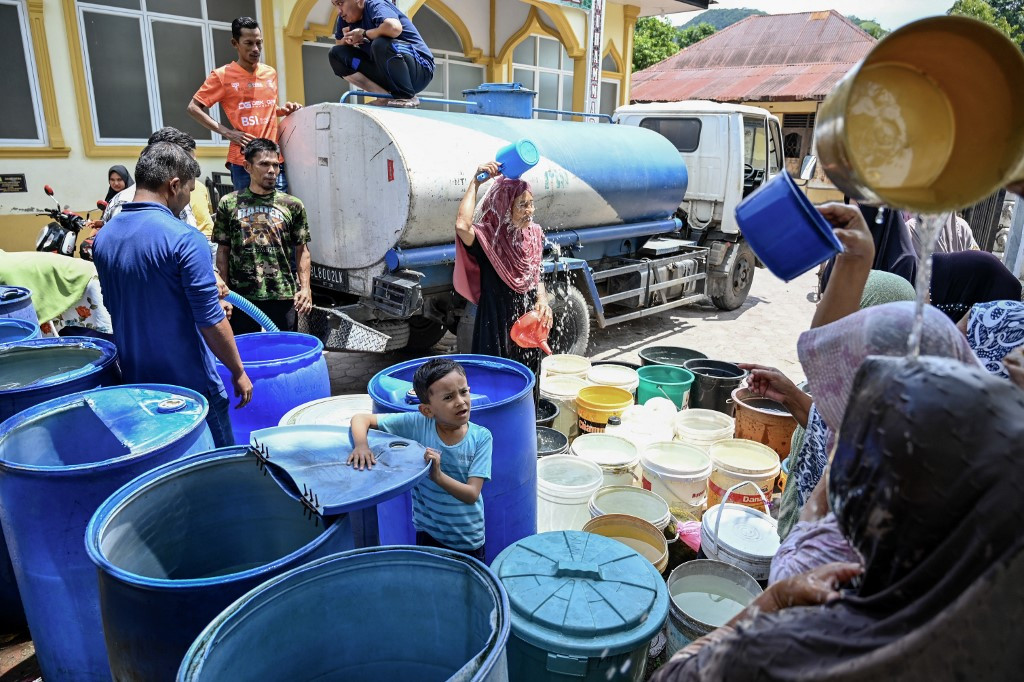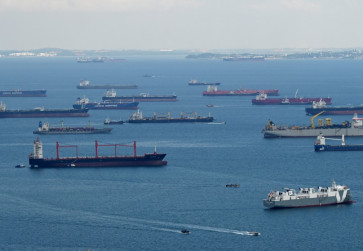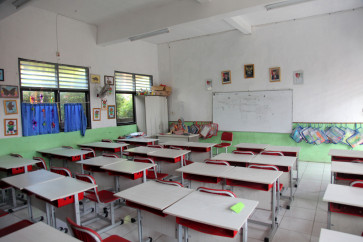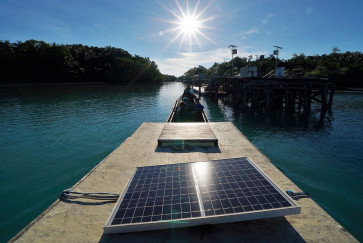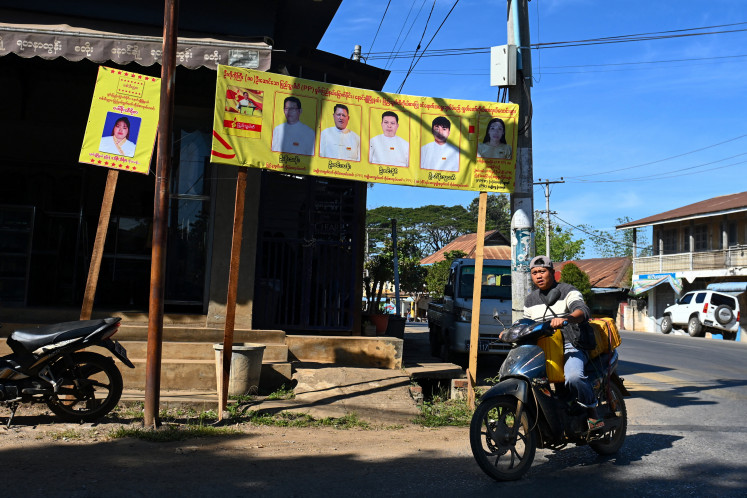Popular Reads
Top Results
Can't find what you're looking for?
View all search resultsPopular Reads
Top Results
Can't find what you're looking for?
View all search resultsCollective action urgently needed for water security in Indonesia
Since everyone uses water, it is fair to argue that everyone must be responsible for water conservation and ensuring the well-being of current and future generations.
Change text size
Gift Premium Articles
to Anyone
"Let alone safe drinking water, any kind of water is hard to come by,” the United Nations secretary-general’s special envoy for water, Retno LP Marsudi, said when quoting a witness from an international community during Bali Climate Week in August. Likewise, Indonesia’s water is “too little, too much and too polluted”.
Indonesia is a large tropical country with one of the highest rainfalls in the world. Despite the abundance of freshwater, Indonesia faces a water crisis due to human factors such as land use change and water overuse.
The World Resources Institute’s (WRI) Aqueduct water risk platform ranks Indonesia 10th, 14th and 55th for drought risk, riverine flood risk and baseline water stress, respectively. Groundwater levels in southern Bali have dropped to over 50 meters within less than a decade, while more than half of rivers have dried up, according to the IDEP Selaras Alam Foundation during the Bali Climate Week’s field visit program.
Climate change has worsened the water crisis by shifting rain patterns that increase the possibility of extreme weather events. According to Statistics Indonesia (BPS), Indonesia had over 1,200 flood events in 2023. Furthermore, UNICEF found that in Indonesia, one in four children under 5 suffer from the waterborne disease diarrhea that is one of the major causes of childhood mortality.
Shortages in agricultural water are another problem that leads to food price increases and malnourishment. Water scarcity, pollution and lack of access cost lives and cause economic losses for individuals, businesses and the government.
Besides experiencing a multi-faceted physical water crisis, Indonesia’s funding for ensuring water security is still insufficient. Through the report Funding a Water-Secure Future, the World Bank recently estimated that governments in developing countries only spend up to 1.2 percent of their spending, 0.5 percent, of gross domestic product on financing the water sector.
This figure is incomparable with the financing needs for global water infrastructure and services, which is US$6.7 trillion and may raise to $22.6 trillion by 2050, while the annual funding gap for water and sanitation is $140 billion per year. There are still uncounted costs to overall water governance such as data framework strengthening, risk assessments, flood protection, pollution control, coastal protection, early warning and disaster response.
Vulnerable populations bear the higher risk of the water crisis in Indonesia. According to the World Bank, approximately 76 million of Indonesians face high flood risk while nearly half of those people have a daily income lower than $5.50. With these demographic conditions, Indonesia’s socio-economic resilience is under threat.
As one of the world’s largest archipelagic countries with the longest coastline and a population largely concentrated in coastal areas, Indonesia faces heightened vulnerability to climate impacts.
Water inadequacy can even cause conflict and forced migration. According to the WRI’s analysis in 2019, competition over water causes violence in Mali, Pakistan, India, Iran, Iraq and Nigeria.
Most parties to the UN Framework Convention on Climate Change (UNFCCC) prioritize water in the climate adaptation agenda as reflected in their intended nationally determined contributions (INDCs) component. Prioritization of water adaptation must be enforced without delay for Indonesia, which has experienced water-related fatalities.
Water is for the people, environment, agriculture and business. The cross-sectoral nature of water management requires collective actions as the solution. Since everyone uses water, it is fair to argue that everyone must be responsible for water conservation to ensure the well-being of current and future generations.
Household scale nature-based solutions such as rainwater harvesting and stormwater management are examples of effective ways to increase water storage in nature while controlling floods and getting additional water sources. With roughly 90 million households, the communities’ actions can drastically reduce water-management fiscal gaps.
It is essential to address water use for human consumption as a basic right. Hence, industries and industrial scale agriculture should be equally if not more responsible for conserving and restoring water resources.
They could implement water efficiency strategies and nature-based water conservation at larger scale to compensate for water use and its impacts. Not only are these actions part of nature protection obligations, but they are also imperative to sustain the businesses in the long-term as there is no business that does not require water to operate.
To enable collective actions, scientists, environmental activists and government should promote simple solutions with relatively low costs and low technology. Affordability and simplicity of solutions leverage more adoption in water stewardship by individual, communities, companies and broader actors while also increasing cost efficiency.
Gary White and Matt Damon in their book The Worth of Water (2022) argue that solutions for water and sanitation should be designed together with the community to ensure they can maintain the facilities by themselves continuously. Proven water crises indicate that law enforcement still requires evaluation and improvement.
Furthermore, future policymaking should consider distributive consequences to ensure fairness of water allocation. Policies must also enable effective budget allocation and revenue creation. For improving time and cost efficiency in governing water resources, innovations to simplify coordination across jurisdiction and watershed authorities are also essential.
The vision of the Bali provincial administration in “One Island One Management” is an example of considerable place-based water management that potentially streamlines coordination by seeing the island as a management unit. To continuously evaluate and improve water management and policy, water data should be integrated.
Consequently, collective action in integrated water resources management is possible. At the same time, more actors can collectively become water stewards to ensure better welfare, nature resilience, greater social capital investment, reduced economic loss, long-term business and economic growth, and peace.
***
Nirarta Samadhi is country director of World Resources Institute Indonesia, where Ananda Putri Permatasari is water program lead. The views expressed are personal.

